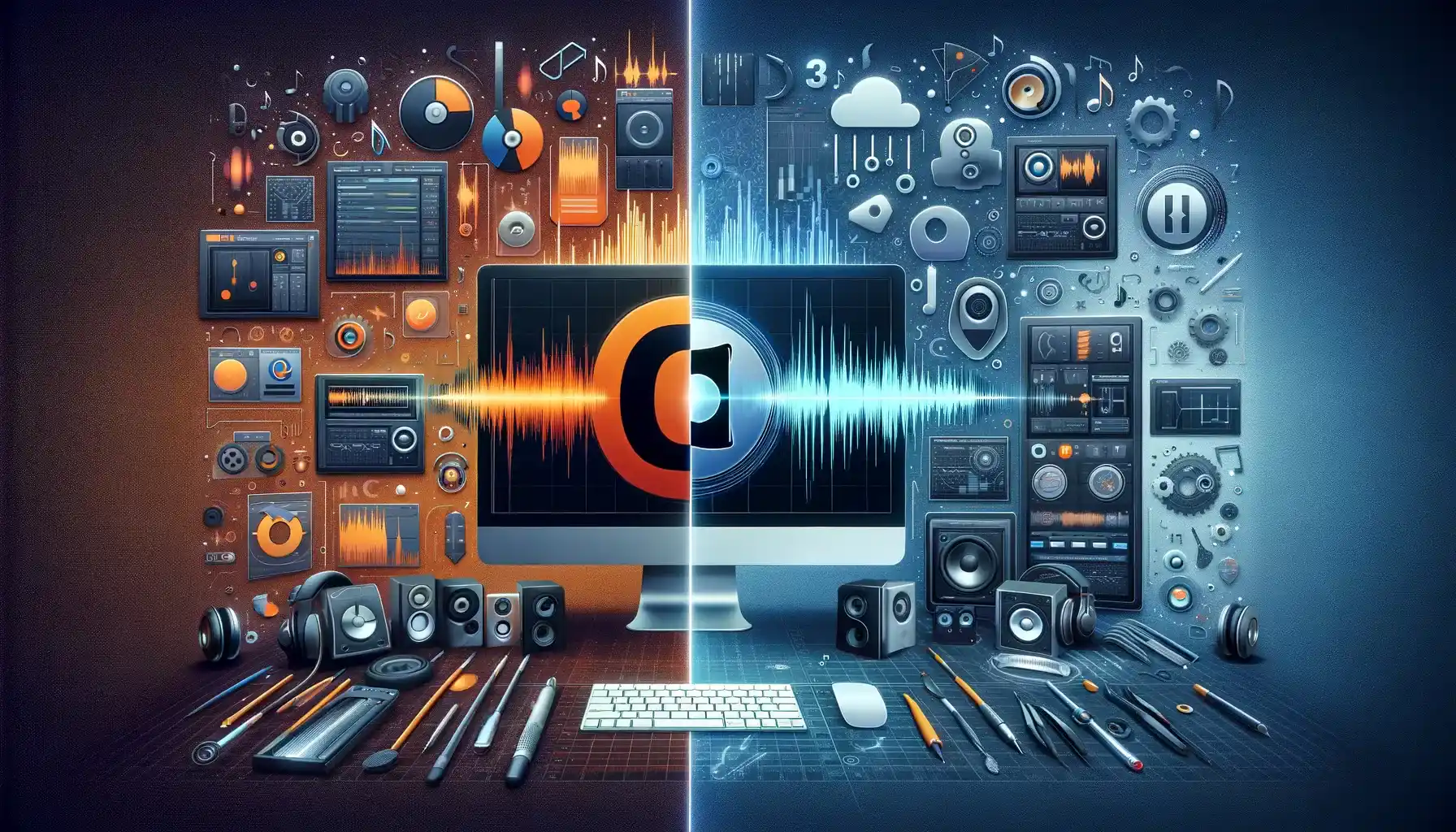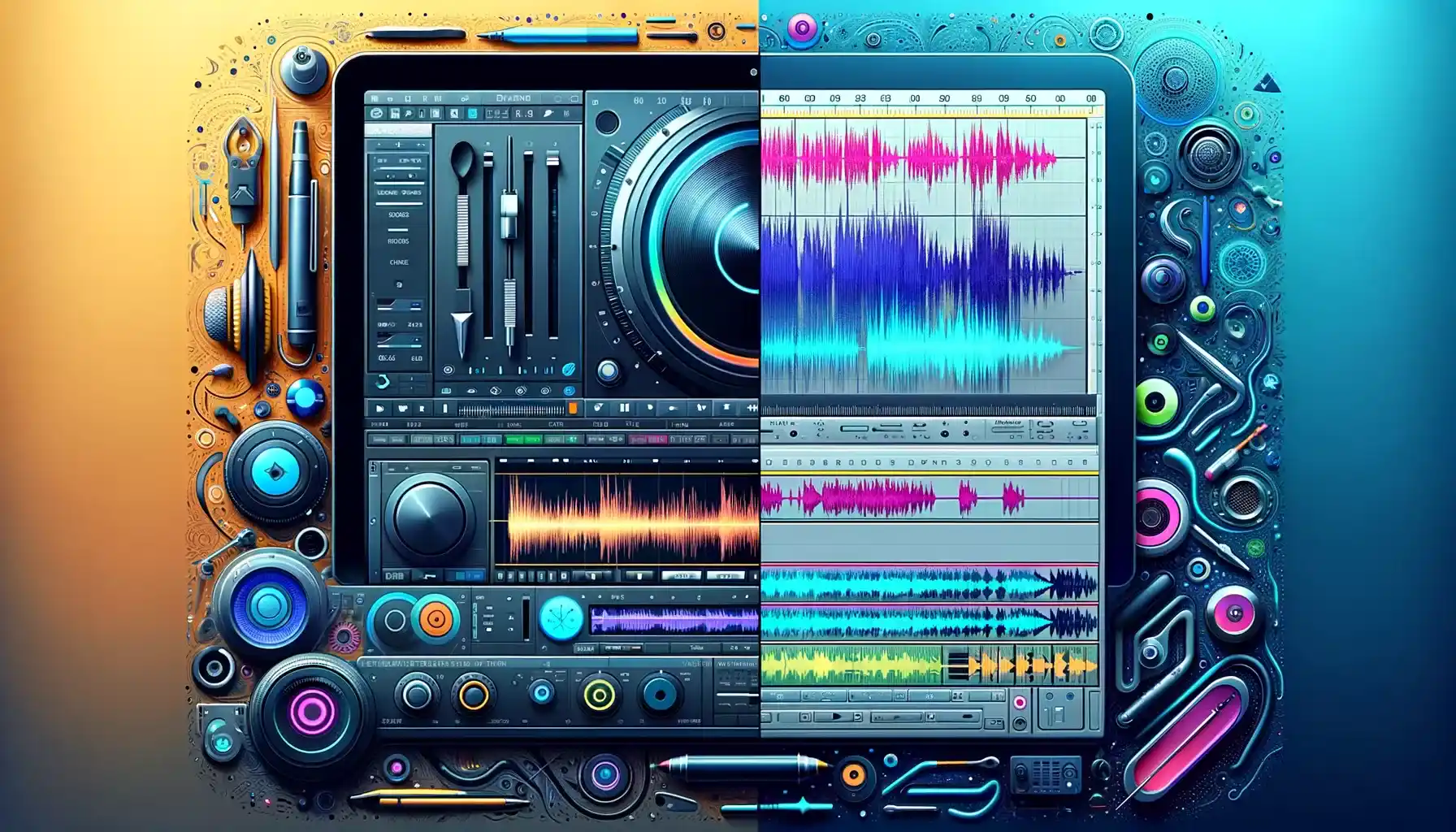Table of Contents
In the world of audio editing, finding the right software can be a game-changer. Audacity 3.0, a renowned open-source audio editing tool, has long held its position as a favored choice among users. However, it’s essential to recognize that commercial audio editors also present a compelling array of features and advantages.
In this comprehensive article, we will explore more into the comparison of Audacity 3.0 vs. Commercial Audio Editors.
By closely examining the features and capabilities of Audacity 3.0 vs. Commercial Audio Editors, we aim to provide you with the insights and information necessary to make an informed decision about which software aligns best with your unique audio editing needs.
Audacity 3.0: A Closer Look
Audacity, a free, open-source audio editing software, has garnered a strong following over the years. With the release of Audacity 3.0, it continues to evolve and improve.
- Multi-Track Editing: Audacity allows you to work on multiple audio tracks simultaneously, making it suitable for complex projects like podcasts, music production, and more.
- Wide Format Support: Audacity supports various audio formats, including WAV, MP3, AIFF, FLAC, and more, ensuring compatibility with most media.
- Built-in Effects and Plugins: Audacity comes with a range of built-in audio effects and supports third-party plugins, allowing you to enhance your audio with ease.
- Spectrogram View: The software offers a spectrogram view for in-depth audio analysis, which can be crucial for professional audio editing.
- Open Source and Free: Perhaps Audacity’s biggest advantage is that it’s open-source and free to use. This makes it accessible to a wide range of users.

Commercial Audio Editors: The Contenders
Let’s check out other audio editing software and compare them with Audacity 3.0 in ‘Audacity 3.0 vs. Commercial Audio Editors’ to find the best option.
- Adobe Audition: Adobe Audition is a professional-grade audio editing software used by many in the industry. It offers advanced features like spectral editing, noise reduction, and seamless integration with other Adobe Creative Cloud apps.
- Pro Tools: Pro Tools is another industry-standard choice, especially in music production. It boasts exceptional audio recording and editing capabilities and supports a wide range of hardware.
- Steinberg Cubase: Cubase is a favorite among musicians and producers. It offers a comprehensive set of tools for music production, including MIDI editing and virtual instrument support.
- Logic Pro X: It is exclusive to macOS users and is renowned for its music production capabilities. It offers a robust set of virtual instruments, audio effects, and recording tools.
Audacity 3.0 vs. Commercial Audio Editors: The Comparison
Compare Audacity 3.0 with Commercial Audio Editors to assess their functionalities and user-friendliness. Delve into their capabilities and ease of use to determine the optimal choice for your needs. Explore ‘Audacity 3.0 vs. Commercial Audio Editors’ to make an informed decision.
1. Price
- Audacity 3.0: Audacity is a standout choice for users on a budget, as it is entirely free and open-source. This affordability makes it an attractive option for beginners, hobbyists, and those looking to keep costs down.
- Commercial Editors: Commercial audio editing software, in contrast, often comes with a substantial price tag. These products require users to purchase licenses or subscribe to monthly/annual plans, which can be a significant factor for individuals and small businesses with limited budgets.
2. Ease of Use:
- Audacity 3.0: Audacity is well-known for its user-friendly interface. Its intuitive layout and straightforward tools make it accessible even to those who are new to audio editing. Users can quickly get started without the need for extensive training or experience.
- Commercial Editors: Commercial audio editors typically offer extensive feature sets, but this often results in steeper learning curves. The advanced tools and options may be intimidating for beginners, and users may need to invest more time in learning the software.

3. Advanced Features:
- Audacity 3.0: While Audacity does provide a wide range of features, it may not match the advanced capabilities offered by some commercial editors. Audacity’s feature set may fall short for complex audio projects, such as music production with intricate arrangements or advanced sound design.
- Commercial Editors: Commercial audio editors are designed to cater to professional-grade audio editing needs. They often include advanced features like spectral editing, high-quality audio processing algorithms, complex automation, and more, making them suitable for demanding tasks.
4. Plugin Support:
- Audacity 3.0: Audacity supports third-party plugins, allowing users to extend its functionality with various effects and tools. This flexibility allows users to customize their editing environment to a certain extent.
- Commercial Editors: Commercial audio editors typically offer extensive libraries of plugins and virtual instruments, enhancing their versatility. Users have access to a vast ecosystem of third-party plugins and virtual instruments, expanding the creative possibilities of the software.
5. Performance:
- Audacity 3.0: Audacity is suitable for basic to intermediate audio editing tasks. However, it may struggle when handling extremely complex projects or large audio files. Performance limitations can become apparent when dealing with a high number of tracks, effects, or extensive automation.
- Commercial Editors: Commercial audio editors are engineered to handle demanding projects with ease. They are optimized for performance, allowing users to work on intricate audio compositions, large-scale music productions, and high-definition audio without encountering significant performance bottlenecks.
6. Integration:
- Audacity 3.0: Audacity may lack seamless integration with other software and services compared to some commercial options. While it can export audio in various formats, its integration with industry-standard tools and services may be limited.
- Commercial Editors: Commercial audio editors often offer better integration with other industry-standard tools and services, such as digital audio workstations (DAWs), video editing software, and cloud-based collaboration platforms. This facilitates smoother workflows for professionals working in multi-disciplinary environments.
The difference between Audacity 3.0 vs. commercial audio editors hinges on your specific requirements, budget, and the complexity of your audio projects. Audacity is an excellent entry point for beginners and those with basic audio editing needs, especially if cost is a concern.
The comparison between Audacity 3.0 vs. commercial audio editors reveals distinct differences that can significantly impact your choice of software for audio editing. However, the advanced features, professional performance, and seamless integration into a broader workflow and the difference between Audacity 3.0 vs. commercial audio editors may be the superior choice, despite the associated costs.

Conclusion
In the battle of Audacity 3.0 vs. commercial audio editors, the choice ultimately boils down to your specific needs, budget, and the complexity of your audio projects. Audacity, with its user-friendly interface and cost-effective nature, stands as a welcoming gateway for beginners and budget-conscious users, offering a solid foundation for basic to intermediate audio editing tasks.
In the comparison between Audacity 3.0 vs. Commercial Audio Editors, the latter stands out for professionals and enthusiasts seeking advanced features, optimal performance, and seamless integration with industry-standard tools. They offer a compelling case with their robust capabilities, catering to high-demand users in the audio editing realm.
Whether you opt for the free and accessible Audacity 3.0 vs. commercial audio editors, remember that both tools have their merits and can help you achieve your audio editing goals. Ultimately, the best choice is the one that aligns with your unique requirements and empowers you to bring your audio creations to life.